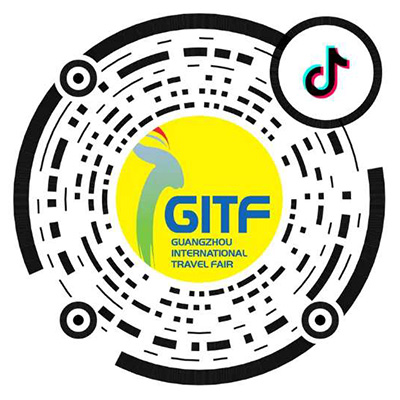
Forum Review | Inbound Tourism Takes a Leap of Faith to Meet the Trillion-Dollar New Blue Ocean
2025-06-10
A Global Perspective
Trends in Inbound Tourism
When “China Travel” has become the traffic code of overseas social networks, when “Jia Kang Ge” has attracted great attention in many Chinese cities, and when popular tourist destinations like Zhangjiajie are “full of international tourists”, a grand plan for the enjoyment and development of the “trillion-dollar market” is unfolding. When popular destinations like Zhangjiajie are “overflowing with international tourists”, a “trillion-dollar market” of enjoyment and development is unfolding. ......
At present, the global tourism industry has experienced profound changes, and China's inbound tourism has become one of the few industry highlights. Data shows that China's inbound tourism surpassed 110 million in 2024, recovering to 80% of its pre-epidemic level. Morgan Stanley estimates that inbound tourism is expected to bring China a cumulative $1.7 to $4.5 trillion over the next 10 years, and its contribution to China's GDP is also expected to rise to 2-4 percent in 10 years. Favorable measures constructed with visa benefits and payment convenience are driving the reconstruction of China's inbound tourism, and behind this is the intersection of growing cultural confidence and the need for cultural exchanges, as well as the reshaping of global tourism appeal.
At the 33rd Guangzhou International Travel Fair (GITF), the 3rd Inbound Tourism Theme Forum was held with the theme of “Trends of Inbound Tourism in a Global Perspective”, to scrutinize the inbound tourism that is developing in full swing with higher dimensions and perspectives, and to find out the code of structural upgrading of the inbound tourism from it.
1
New Opportunities
Guangzhou's inbound tourism market recovers steadily
“Visa facilitation in recent years has been a great convenience, a great enhancement, and a great boon to inbound tourism in Guangzhou. The growth of international flight routes at Baiyun Airport and inbound figures at the port resumed well last year, and it was all a pleasant surprise in that sense.” At the beginning of the forum, Ke Xiandong, deputy director of the Guangzhou Municipal Bureau of Culture, Radio, Television and Tourism, introduced the development of inbound tourism in Guangzhou in his keynote speech. He said that new development trends have emerged in Guangzhou's inbound tourism, such as the Canton Fair, which has brought high-end visitors for business convention and exhibition tourism. For Guangzhou, it's more important to talk about what to do in the future.
According to the relevant analysis, the thinking strategy of inbound tourism is divided into several major dimensions, including deepening policy facilitation and perfecting payment and tax refund system, creating differentiated cultural and tourism products, strengthening international marketing and regional synergy, improving service quality and intelligence, tapping the potential of festival and exhibition economy, promoting sustainable development and green tourism. He introduced that Guangzhou has also been trying to do accurate source marketing in the past few years, such as inviting major destination countries and cities, big names in the tourism industry and friends from the news media to come to Guangzhou to experience the “New Year's Eve in Guangzhou and see the flowers in the city of flowers”: “This is a family-oriented, fully adapted to foreign countries, and many big names are bringing their families here,” he said. Many big names come with their families, and this is the real experience.”
Deputy Director Ke Xiantong said that empowered by the policy, Guangzhou has been striving to create the friendliest inbound environment. In addition to the visa convenience which has been greatly improved, the airlines have to work together to promote the transportation convenience. However, how to better translate into market effect requires industry experts, especially travel agencies, to study how to utilize this policy. He believes that the industry segment of inbound tourism is the supply and demand segment, and he believes that this year is a very good time for Guangzhou - the biggest IP this year is the hosting of the Fifteen-Year Games and the Special Paralympics in the Guangdong-Hong Kong-Macao Greater Bay Area, and it will be very favorable for Guangzhou to follow the events to travel, follow the conventions and exhibitions, and follow the films to travel, and so on. In addition, precise marketing is very important, AI, VR and other online means make inbound tourism a new world again, and targeted marketing will also try to promote Guangzhou's inbound tourism to multiply.
The stone of other mountains can attack jade. At the forum, Yang Yu, the chief representative of the Dutch National Tourism and Convention Bureau in China, shared the experience of how the Netherlands attracts global tourists through differentiation strategies. Starting from the saying that a peach tree does not live for three years and a jujube tree does not die for three years, Yang Yu emphasized the importance of rooting in local culture: “When you have a cultural activity that is rooted in the local community, it's the beginning of a storybook, and it's a storybook that can't be told.” He believes that local culture is the soil, tourism is the fruit, daily is the scenery, custom is IP. But “fragrant wine is also afraid of deep alley”, in Yang Yu's view, there are good things in addition to outwardly, but also to “find the right person to say the right dialogue, the final result”, which also reflects the importance of precision marketing. This also reflects the importance of precision marketing.
Now a lot of tourist attractions, tourism promotion, tourism selling points, are the previous generations left for us. A lot of world cultural heritage is not created by our generation, nor is it created by our previous generation, even if we have to go back eight generations of our ancestors are not created by them, it is a generation of non-stop efforts, non-stop accumulation down. He believes that, for the destination, investment in the lives of local residents, to make the cultural life of local residents colorful, because the lives of local residents is the most attractive to tourists, such as the Dutch cycling culture, full of attraction to tourists.
2
Responding to New Challenges
Precision marketing to promote multiplication of inbound tourism
At present, global inbound tourism is recovering, and China's inbound tourism has also ushered in strategic opportunities. However, opportunities are bound to coexist with challenges. Over the past three years, the global tourism industry has experienced profound changes, whether in terms of source structure, market demand, marketing channels, etc. Huge changes have occurred. How can China as a destination seize the dividends of recovery and meet new challenges? Under the auspices of Li Xieju, Executive Director of Guangdong Travel Agency Industry Association, expert representatives from government departments, international organizations and enterprises opened a brainstorming session.
When it comes to opportunities, it is inevitable to speak with figures. In recent years, China has expanded its independent and unilateral opening in an orderly manner, implemented a unilateral visa-free policy for 38 countries, implemented visa-free transit for 54 countries and extended the duration of stay to 240 hours, and launched a series of entry facilitation policies. Data from the Ministry of Commerce shows that China received 26.94 million foreign tourists last year, up 96 percent year-on-year. In the first quarter of this year, there were 9.215 million inbound foreign tourists, a year-on-year increase of 40.2 percent. How can Guangzhou, as an important tourist destination, meet the “multiplication plan” of inbound tourism through innovation?
Ke Xiandong, deputy director of the Guangzhou Municipal Bureau of Culture, Radio, Television and Tourism, said that when it comes to innovation, Guangzhou will continue to do a good job of targeted marketing, for example, during the Spring Festival, Guangzhou will continue to do the “New Year's Eve in Guangzhou, the city of flowers to see the flowers,” the “fifteen” during the period of a lot of targeted products, and the Incentive policy for inbound tourism. He also believes that the cultivation of talents for inbound tourism is crucial.
As a world tourist destination country, the Netherlands' marketing experience in the international market can also provide a sample for Guangzhou. Yang Yu, chief representative of the Dutch National Tourism Conference Promotion Bureau in China, said that Dutch tourism has gone through several phases in international marketing, and has now entered the third phase - focusing on how to motivate Chinese tourists coming to the Netherlands to spontaneously and positively publicize the Dutch message on their own self-media.
In terms of spontaneous marketing by tourists, He Huanbang, general manager of Guangzhou Peer Friends International Travel Agency Limited, agrees: “Once guests come to China and take photos and share them on their social media, it will bring us more guests again.” At the same time, international tourists from different regions have different needs, so travel agencies will do different promotions and products in each destination and on each account.
“Residents are the guardians of culture.” Xu Shengli, chief representative of Saxony Tourism in China, shared an attempt made by Saxony in Germany in terms of tourism, that is, how to promote the growth of the number of tourists with the participation of local residents, and they can also be profitable, for example, the design and organization of festivals, Saxony, every year in the Easter season and every year in the summer, Christmas time, the local residents will wear a baroque style costumes reflecting the 17th and 18th centuries when the region was at its peak, walk on the streets, go into the pubs, go into the restaurants for some neighborhood interaction. In the 17th and 18th centuries, when the region was at its peak, local residents dressed up in baroque costumes and went out on the streets, into bistros and restaurants to interact with their neighbors, inadvertently creating a very beautiful landscape, which made a lot of foreign tourists feel that integrating themselves into the local cultural interaction of 200 years ago was a very good experience, and then they took pictures of these scenes and posted them in their friend circles. They then take pictures of these scenes and post them in their circles of friends, which is a point that Saxony has been trying to create when promoting itself abroad.
It is worth noting that in the roundtable session, many guests have talked about “following the trend”, that is to say, following the current changes in global tourism to find opportunities for inbound tourism, and in the face of the opportunities and challenges, we should do our own thing, and continue to do so.
3
Finding the Breaking Point
Cultural support is key to bringing destinations to life
Whether following the trend or taking advantage of it, China's inbound tourism development is heading for a new peak. But who can take the lead to get out of the circle and who can break the game first? Industry insiders also have a lot to think about in terms of how to find a breakthrough point in inbound tourism. Especially for the port city like Guangzhou, transformed into an inbound tourism destination has a natural port advantage, but only by virtue of the port status is not enough.
Li Shuyi, inbound tour manager of Guangdong China Travel Service Co., Ltd. observed that most of the international tourists come to Guangzhou for business purposes, and it is now crucial to link these business guests with some pure tourism programs: “When we recently received some inbound clients from Kazakhstan, we designed the products to bring them back to know Guangzhou through some new elements, including science and technology tours, meta-universe-themed parks, and so on. We also arrange for them to go to the more popular tourist destinations. We also arrange for them to go to more grounded living areas, for example, like in the residential area of Shamian to learn about the life of the people of Guangzhou, such as the uncles and aunts who play Tai Chi, etc., all of which have strongly attracted the foreign guests' points of interest in the life of Guangzhou citizens.”
Liu Yingjia, manager of the international department of Guangdong Province China Youth Travel Service, believes that product innovation is very important, such as the face of emerging markets, like Poland, Eastern Europe, including the “Belt and Road” co-construction countries, and South America, in the line design will be added to the shenzhen DJI drones, Huawei, etc., as well as and some colleges and universities, cultural exchanges in terms of content: “Next, we also want to deepen the traditional cultural content, such as food, parent-child, so that foreign children to learn our language. Last year, some French teenagers came for eight nights and nine days to learn our traditional culture, including lion dance, kung fu, tea making, etc. I think there is still a market for this.”
Huang Yanlin, general manager of Ctrip Group's government cooperation department in Guangdong, found through Ctrip's data survey that there are a few segments that are very attractive to foreign tourists: “One is non-heritage, such as dragon boat races at the Dragon Boat Festival, and actually many foreigners will be interested in this segment. Therefore, we have also launched some customs experience, such as going to Chaoshan to play beef balls and making red peach barley.” In addition, innovative experiences of technological glamor such as drones in Shenzhen and Guangzhou, for example, are also hotspots that are very easy to notice in Guangdong tourism in the eyes of international tourists.
For the tour content that international tourists are interested in, Hou Guonan, chairman of the board of directors of Pishi OPB, also agrees very much with the attraction of theme-based tours for tourists: “For example, following the exhibitions to travel, at present, every year these foreigners who enter the Chinese market through our platform are about 3,000 people.” In Hou Guonan's view, the breaking point of inbound tourism may not be in the culture and tourism itself, but may be outside the culture and tourism, because the culture and tourism may be the ultimate value-added services, for example, Guangzhou to business-driven tourism at the same time, but also to culture and tourism to promote business.
“Promote with culture and attract with quality.” Wang Zhilin, deputy general manager of Hubei Zhaojun Tourism and Culture Development Co. Ltd, agrees that recognition, access and quality are the three keys to boosting inbound tourism. Behind this, telling a good Chinese story and using culture as an attraction as well as a breakthrough point may be the next new grip to inspire inbound tourism.
The United Nations Tourism Organization (UNWTO) recently released its World Tourism Barometer, which shows that global international tourist arrivals reached 1.4 billion in 2024, largely recovering to the same period in 2019. The organization expects tourism in major destination countries to maintain its growth momentum in 2025, with global international tourist arrivals expected to grow by 3 to 5 percent. The generally longer travel stays and higher average expenditures of international tourists will drive rapid growth in global tourism revenue. The forum has pointed out the direction for the future development of Guangzhou and even China's inbound tourism, which will usher in a better tomorrow with the development of the global tourism industry and the continuous opening up of China's tourism market.
Address: Room 1510, West Tower, Poly Trade Center, No.1000 Xingang East Road, Haizhu District, Guangzhou, China










